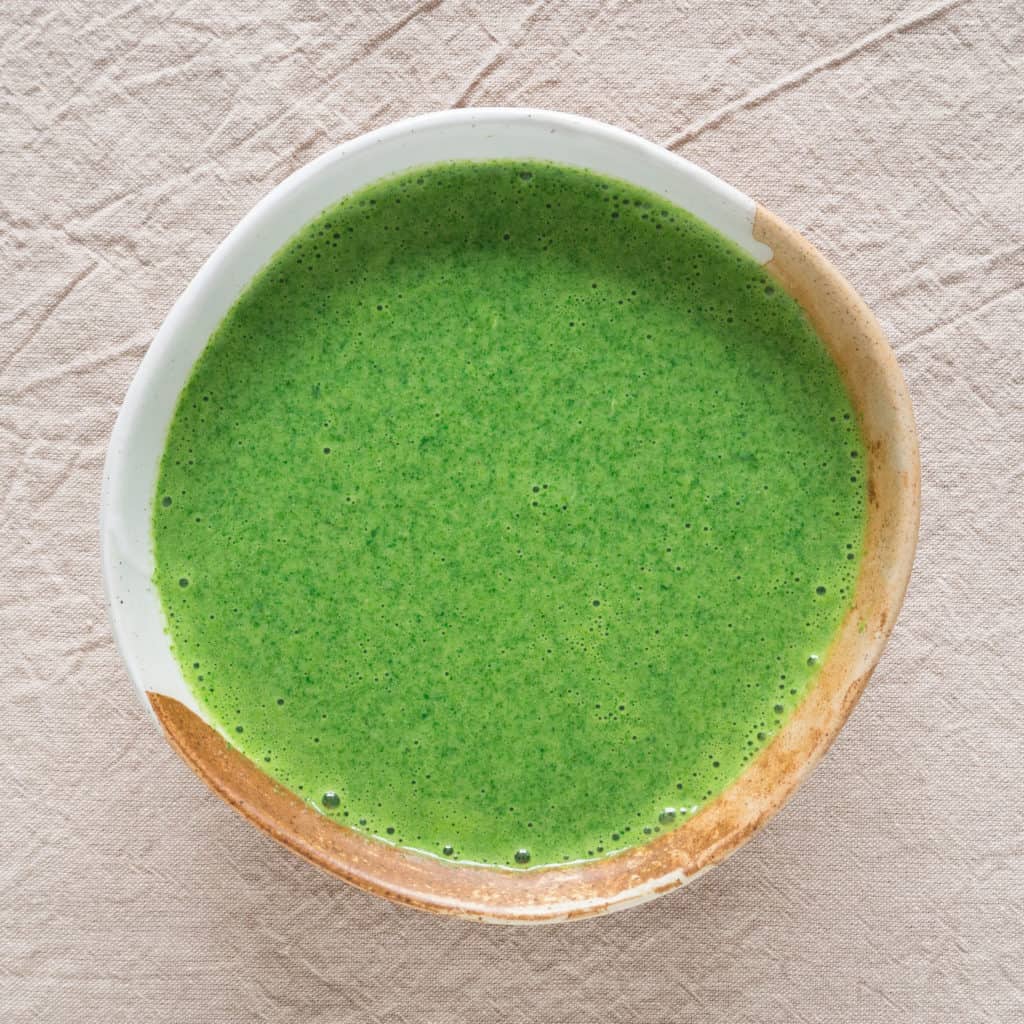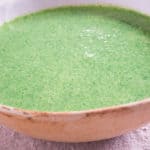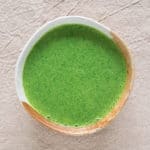
Watercress Soup is amazing. Apart from the nutritional boom (watercress is rich in folate, pantothenic acid and copper, and a very good source of vitamin A, vitamin C, vitamin E, vitamin K, thiamin, riboflavin, vitamin B6, calcium, magnesium, phosphorus, potassium and manganese) the colour is incredible. Watercress has a peppery fire that is very distinctive and delicious. Wonderful in salads, the fire in watercress becomes much more subtle when blanched or cooked. Watercress Soup is a great early-summer soup that reminds me summer is well and truly on its way.
My FriFran gluten-free, vegan Watercress Soup is very easy and quick to prepare. It takes only 20 minutes from starting the soup to bowls of steaming green gorgeousness on the table. Best eaten straight after cooking. Or chill very quickly to serve cold. This soup is also great served cold in the height of summer.
Find the full Watercress Soup recipe here.
Preparation
Difficulty easy
Preparation time 5 minutes
Cooking time 15 minutes
Find the full Watercress Soup recipe here.
Allergens
Gluten-free and vegan as well as…
Coconut free
Garlic free
Lupin free
Mustard free
Nightshade free
Onion free
Peanut free
Sesame free
Soya free
Tree nut free.
Find the full Watercress Soup recipe here.
About
Many watercress soup recipes use potatoes as a base. I’m not a fan of potatoes in a summer watercress soup. I prefer to use buckwheat to thicken the soup slightly. Many recipes also cook the watercress way too long (some up to 35 minutes!?) – I prefer to blanche the watercress. This keeps the colour, flavour and nutrition. It just takes the edge off the fiery heat of raw watercress.
Watercress is a delicious, nutrient dense, vegetable known for its strong peppery, mustardy flavour. Watercress is an aquatic plant species with the botanical name nasturtium officinale. Watercress is a rapidly growing, aquatic or semi-aquatic, perennial plant native to Europe and Asia. It is one of the oldest known leaf vegetables consumed by humans. It is a member of the family Brassicaceae, botanically related to garden cress, mustard, radish and wasabi—all noteworthy for their piquant flavour.
A 100 gram serving of watercress provides 11 kilo calories and is particularly rich in vitamin K. Watercress also contains significant amounts of vitamin A, vitamin C, riboflavin, vitamin B6, calcium, manganese, and folate. Watercress is low in carbohydrates, protein, fat and dietary fiber .
Watercress founds in shops and markets is cultivated in shallow gravel beds fed by springs and bore-holes providing a constant flow of relatively warm pure chalk filtered spring water; watercress thrives best in water that is slightly alkaline. It is frequently produced around the headwaters of chalk streams.
Depending on the time of the year watercress can be grown from seed or grown from shoots left behind from the last harvest. The growing time of watercress can range from 28 to 70 days, depending on the weather. The warmer it is the faster the plants grow.
Watercress is a marginal plant and derives most of its nutrients from the water through roots embedded in the gravel. It also uses its aerial roots which sprout from the stem, to enable it to absorb even more nutrients.
On a winter’s day steam can be seen rising from the beds as the warmer spring water meets the cold air. On these days, the watercress characteristically “ducks its head” close to the water to keep warm.
In the United Kingdom, watercress was first commercially cultivated in 1808 by the horticulturist William Bradbery, along the River Ebbsfleet in Kent. Watercress is now grown in a number of counties of the United Kingdom, most notably Hertfordshire, Hampshire, Wiltshire and Dorset. The town of Alresford, near Winchester, holds a Watercress Festival that brings in more than 15 000 visitors every year, and a preserved steam railway line has been named after the local crop. In the United States in the 1940s, Huntsville, Alabama, was locally known as the “watercress capital of the world”.
Watercress crops grown in the presence of manure can be an environment for parasites such as the liver fluke, Fasciola hepatica. This is a good reason to be very careful when picking wild watercress, which should not be picked from areas adjacent to farms and in any case be thoroughly washed. Cytochrome P450 (CYP2E1) compounds in watercress may alter drug metabolism in individuals on certain medications.

